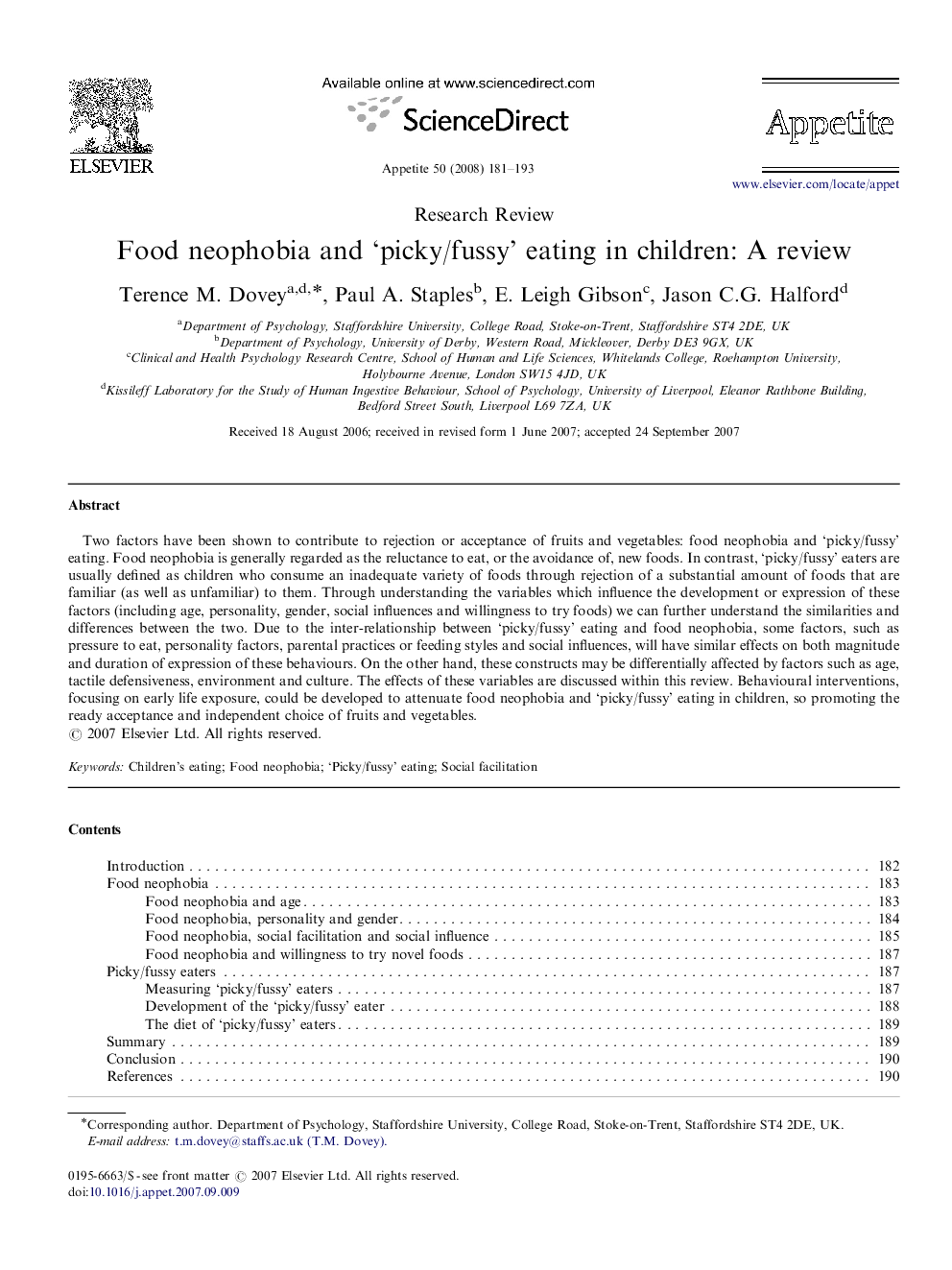| کد مقاله | کد نشریه | سال انتشار | مقاله انگلیسی | نسخه تمام متن |
|---|---|---|---|---|
| 941415 | 1475421 | 2008 | 13 صفحه PDF | دانلود رایگان |

Two factors have been shown to contribute to rejection or acceptance of fruits and vegetables: food neophobia and ‘picky/fussy’ eating. Food neophobia is generally regarded as the reluctance to eat, or the avoidance of, new foods. In contrast, ‘picky/fussy’ eaters are usually defined as children who consume an inadequate variety of foods through rejection of a substantial amount of foods that are familiar (as well as unfamiliar) to them. Through understanding the variables which influence the development or expression of these factors (including age, personality, gender, social influences and willingness to try foods) we can further understand the similarities and differences between the two. Due to the inter-relationship between ‘picky/fussy’ eating and food neophobia, some factors, such as pressure to eat, personality factors, parental practices or feeding styles and social influences, will have similar effects on both magnitude and duration of expression of these behaviours. On the other hand, these constructs may be differentially affected by factors such as age, tactile defensiveness, environment and culture. The effects of these variables are discussed within this review. Behavioural interventions, focusing on early life exposure, could be developed to attenuate food neophobia and ‘picky/fussy’ eating in children, so promoting the ready acceptance and independent choice of fruits and vegetables.
Journal: Appetite - Volume 50, Issues 2–3, March–May 2008, Pages 181–193